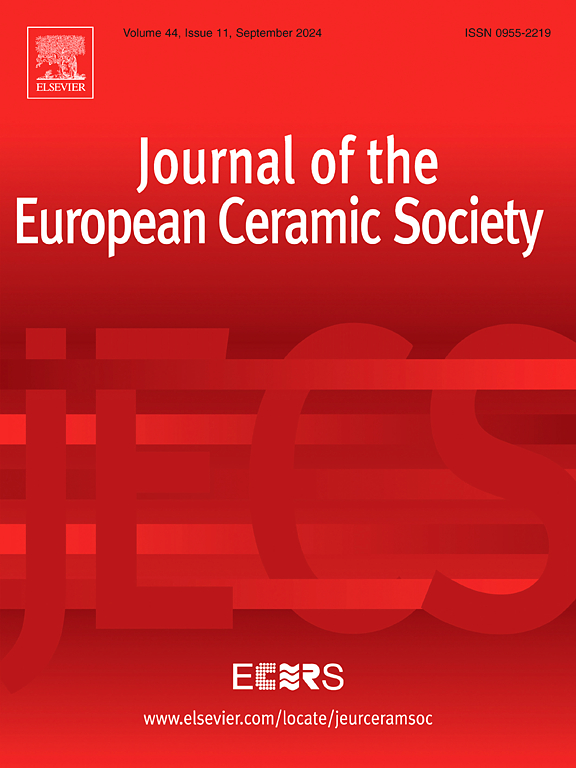In situ compression of ceramic-organic supraparticles: Deformation and fracture behavior
IF 5.8
2区 材料科学
Q1 MATERIALS SCIENCE, CERAMICS
Journal of The European Ceramic Society
Pub Date : 2025-04-25
DOI:10.1016/j.jeurceramsoc.2025.117482
引用次数: 0
Abstract
Supercrystalline nanocomposites (SCNCs) feature intriguing functionalities and exceptional mechanical properties, but they are usually confronted with challenges when it comes to processing them in larger bulk form. One way to tackle this problem is a hierarchical approach, for which spherical SCNCs, i.e. supraparticles (SPs), are promising candidates as building blocks. Understanding the mechanical behavior of SPs is thus a key step towards the development of robust, multifunctional and macroscopic SCNCs. Hereby, in situ compression tests are performed on SPs with varying sizes and levels of crosslinking of their organic ligands. A size-dependent deformation and fracture behavior emerges. Plasticity occurs in larger SPs, while small ones exhibit brittle fracture. Surface stress and compaction affect the elastic modulus. Fracture initiation sites shift from the center of SPs to their equatorial belts with the decrease of SPs’ size. The inverse scaling relationship between fracture strength and SPs’ sizes is rationalized via Griffith theory.
陶瓷-有机超颗粒的原位压缩:变形和断裂行为
超晶纳米复合材料(scnc)具有有趣的功能和优异的机械性能,但在大规模加工时往往面临挑战。解决这个问题的一种方法是分层方法,其中球形scnc,即超粒子(SPs),是有希望的构建模块的候选者。因此,了解SPs的力学行为是开发鲁棒、多功能和宏观scnc的关键一步。因此,对具有不同尺寸和其有机配体交联水平的SPs进行原位压缩试验。出现了与尺寸相关的变形和断裂行为。较大的SPs出现塑性,而较小的SPs表现为脆性断裂。表面应力和压实影响弹性模量。裂缝起裂位置随着SPs大小的减小而从SPs中心向赤道带转移。通过Griffith理论推导了断裂强度与SPs尺寸之间的反比尺关系。
本文章由计算机程序翻译,如有差异,请以英文原文为准。
求助全文
约1分钟内获得全文
求助全文
来源期刊

Journal of The European Ceramic Society
工程技术-材料科学:硅酸盐
CiteScore
10.70
自引率
12.30%
发文量
863
审稿时长
35 days
期刊介绍:
The Journal of the European Ceramic Society publishes the results of original research and reviews relating to ceramic materials. Papers of either an experimental or theoretical character will be welcomed on a fully international basis. The emphasis is on novel generic science concerning the relationships between processing, microstructure and properties of polycrystalline ceramics consolidated at high temperature. Papers may relate to any of the conventional categories of ceramic: structural, functional, traditional or composite. The central objective is to sustain a high standard of research quality by means of appropriate reviewing procedures.
 求助内容:
求助内容: 应助结果提醒方式:
应助结果提醒方式:


